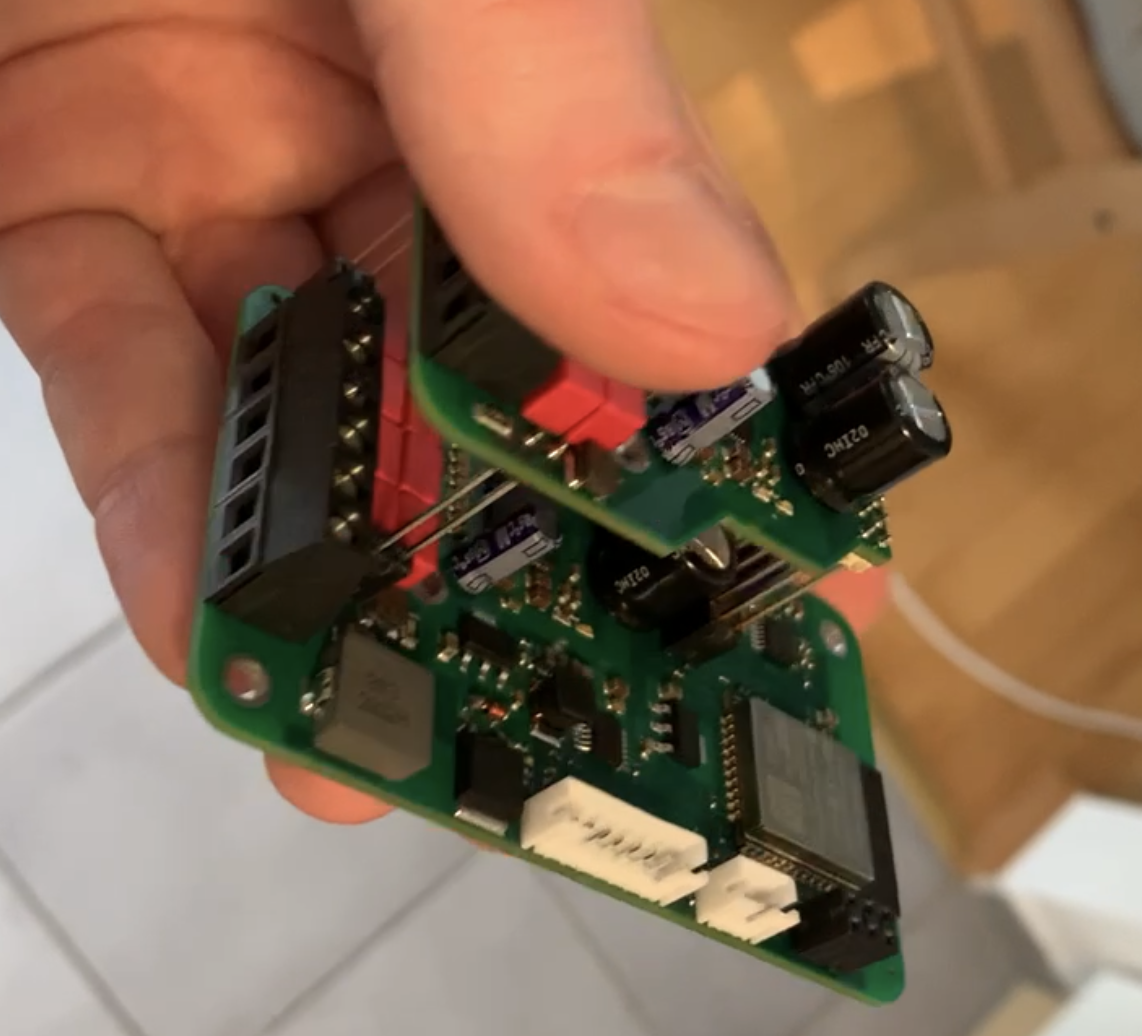This project is a 4-Channel Class-D DSP-amplifier based on a ESP32 / MA12070P chipset with Bluetooth- & AUX-input with graphical programming by a Windows tool and was designed as an alternative to all those chinese audio-boards usually designed around TPA3116 amps, ADAU1701 DSPs and Zhuhai Jieli bluetooth-IC's.
After multiple requests I have finally decided to publish the whole project under GPL-3.0 license.
This repository contains all hardware-design, firmware-files, documentation as well as preliminary EMI compliance measurements.
I have uploaded two videos on my YouTube channel where I presented the project one time in general and another follow-up video doing a live-demonstration with a Bose Acoustimass 5 system. Please watch those videos to get a feeling for the project scope:
Project Description & Overview
Live Demo on Bose AM5 system
- Bluetooth Wirless Audio & Analog Audio Input
- DSP with following features
- Gain / Polarity / Mute / Sourceselect / Internal Mono-Summing
- Individual Highpass / Lowpass per channel
- 5 parametric equalizer per channel (Bell, HighShelf, LowShelf)
- Delay up to 30ms per channel
- Power output limiter
- Virtual Bass Enhancement
- Dynamic Bass Boost
- IrDA remote control receiver
- Support to learn commands from any IR remote for basic control
- Integrated WiFi Access Point and Windows based UI software
- Enables realtime DSP modification
- One software-tool to configure everything (DSP, system-control, IrDA, etc..) and supports saving/loading presets as file
- Class-D amplifier with 2 channels (+2 additional channels with extension board)
- Intergrating state-of-the-art Class-D amplifier technology based on Infineon Merus
- 80 Watts / Channel @ 4 Ohm
- In sum I designed three board-revisions (the schematics & gerber-files in this project as well as the board shown in the YouTube videos are the latest ones)
- I also did some EMI compliance measurements based on an earlier rev2 board.
- The radiated emission-tests (30 MHz upwards) were fine and I had met the requirements of CISPR32:2015 / DIN EN 55032.
- There were some issues with the conducted emissions test (150 kHz - 30 MHz) with 24V/6A Meanwell reference-SMPS. It turned out that the CMC filter I used on rev2 was useless and redesigned it to a standard LC input filter on rev3. But I never did retest the rev3 for conducted emissions.
- I uploaded some photos from the EMI-chamber test-setup and sprectrum-analyzer-screenshots from this test here also
- The firmware was only a proof-of-concept work for me. While it was overall in a more or less functional condition, it definitely needs some major refactoring, rework & cleanup. Not to mention that I did not document or made any comments on the code. As I was pretty new to FreeRTOS on ESP32 I also did not use the FreeRTOS probably always in the correct way as intended.
- I did not touch the uploaded code for almost three years (it was just laying around on my Dropbox) and I also didn't test it now. I cannot tell you if this code will or will not compile or function at all with current ESP-IDF version or that I might have made some changes I wanted to fix but forgot about and didn't track. Same applies for the UI tool. So just try it out & find out :)
- I have documented the protocol between the ESP and the UI-tool in the commands.txt file.
- The Gui-Tool is C# based and was developed using SharpDevelop which is a very lightweight C# development environment. It might be possible to run the UI tool also on Mac or Linux using mono.




